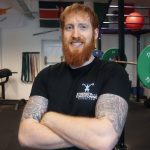INTRODUCTION
I have always had an affinity for books and started collecting strength and conditioning manuals about 12 years ago.
This has spurred me to set up the SCC Book Club where I recommend and discuss various books that I think will be really helpful to both fitness professionals and enthusiasts.
Although this article is about strength and conditioning manuals, the book club will be recommending books from a broad range of topics :
- Health and fitness.
- Sports.
- Marketing.
- Business development.
And yes, even though I am a huge fan of having a physical book in my hands. I have to admit, these days I do struggle to find the time to sit and read. Therefore, I use audible A LOT, and currently have over 1 month of total listening time.
One of the best things about audible is that we can easily gift our academy members with audible membership or credits to purchase the books on our read / listen list – join our newsletter to be in for a chance to win!
In this article, I have picked a varied selection of just 10 strength and conditioning manuals + a bonus book. These are not in any particular order. However, I have written a short paragraph for each.
The likelihood is I will be doing several top 10 lists as I could literally do a top 50. However, I feel this is a great selection, so let’s get into it.
ESSENTIALS OF STRENGTH TRAINING AND CONDITIONING
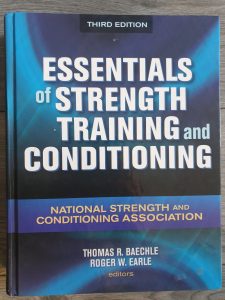
The Essentials of Strength Training and Conditioning by Baechle and Earle is pretty much the bible of strength and conditioning, and I suggest all coaches have a copy – the fourth edition is currently available (Haff & Triplett).
The manual is over 600 pages and covers all key areas in good detail – If you are studying for your CSCS, the latest version of this manual is a must!
I have read this copy cover to cover, which took me a month or two and was more of a challenge I set myself about 9 years ago. However, I suggest you take your time and study specific sections.
It is more of a manual for coaches rather than enthusiasts. However, if you are willing to spend £70 / $90, and want a real strength and conditioning textbook, then go ahead – it is not a hard manual to understand, it’s just a little more academic than some of the other manuals in this list.
STARTING STRENGTH
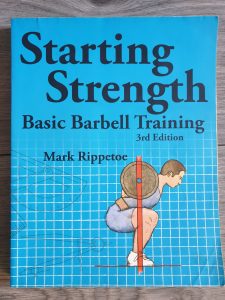
Starting Strength was the first strength manual I ever read and was what captivated me to the barbell.
Prior to joining the British army, I competed in combat sports and spent much of my time teaching both Muay Thai and boxing. In these sports, the conditioning involves pad and bag work, and lots of circuits and running – essentially, the training I did as a teenager was all old school, “Rocky” style conditioning, with zero barbell strength training.
I recommend all coaches read Starting Strength as it gives a great insight into the true “Strength Coach” side of things.
Starting Strength is an easy read and something you can definitely read cover to cover. However, I would say that Mark Rippetoe has very distinct opinions on the way certain lifts should be taught. For example, using the low bar back squat with the hip drive method. Therefore, it should be noted that there are many ways to skin a cat.
You can also find Starting Strength on Audible which is great as not many strength and conditioning manuals are on there.
SCIENCE AND PRACTICE OF STRENGTH TRAINING
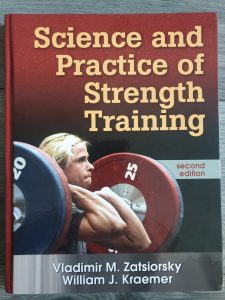
The next three manuals in this list create a trio that every serious strength and conditioning coach should own.
All three of these books have been written by infamous Russian sport scientists, namely Vladimir Zatsiorsky and Yuri Verkhoshansky. Therefore, I wouldn’t necessarily class these as easy reads and some of the content will be beyond the average coach’s scope.
In this manual, Zatsiorsky uses science to improve an athlete’s muscular strength and covers areas that have become defining principles within strength training, such as the maximum, sub-max, repeated and dynamic effort methods.
Zatsiorsky is a world renowned sports biomechanist and former strength and conditioning consultant for the Soviet Union Olympic teams. Therefore, he is definitely someone to listen to!
SUPERTRAINING
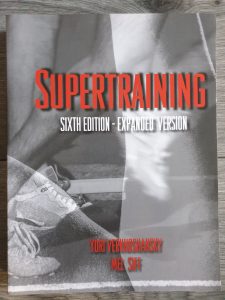
Supertraining was written by Mel Siff and Yuri Verkhoshansky.
I talk about Mel Siff when we get to the manual Facts and Fallacies of Fitness. However, Supertraining and Special Training (the next manual) are all about Verkhoshansky’s work.
Yuri Verkhoshansky was a Russian track and field coach and sports scientist and is considered the godfather of plyometrics – he is famous for developing an advanced form of plyometrics known as the “Shock Method”.
Supertraining is a huge manual of almost 600 pages and is packed with what can only be described as elite level sports science and strength and conditioning content. However, it is a little hard to read – it is going to take you awhile to get through this manual!
This is not a manual for the casual reader. However, coaches should just pick a couple of pages at a time and learn something new – although these manuals can be really expensive, don’t be afraid to get out your highlighter and post stick notes.
SPECIAL STRENGTH TRAINING MANUAL FOR COACHES
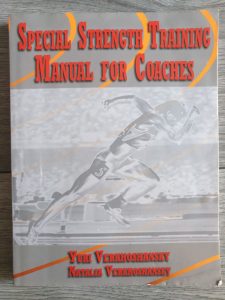
This manual was written by Yuri Verkhoshansky and his daughter Natalia.
Special Strength Training (SST) essentially means using specialized resistance exercises to improve an athlete’s competition in his sports discipline.
This is a must-read for experienced coaches and athletes as it covers SST methods for resistance training, jump training and combined methods which are detailed as:
- The Complex Method.
- The Stimulation Method.
- The Contrast Method.
- The Circuit Method.
- The Strength-Aerobic Method.
This manual will definitely educate the reader on countless advanced training techniques that are evidence-based.
FACTS AND FALLACIES OF FITNESS
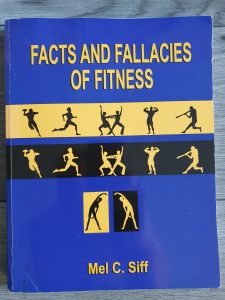
I really struggled to find a copy of Facts and Fallacies of Fitness in the UK, but eventually found a second-hand copy on eBay.
This manual by Mel Siff, who worked with Verkhoshansky on Supertaining is an absolute gem. It is packed with knowledge put into an easy to read format with plenty of fun cartoon illustrations.
The late Mel Siff had a PhD in Physiology and an MSc in Applied Mathematics. He also competed in karate, trampolining, track and field, Powerlifting and Weightlifting – smart and strong!
The manual busts loads of myths about the right and wrong way to do things, which for the most part eradicates the scaremongering that surrounds squatting and loading the spine and knees etc.
POWER: A SCIENTIFIC APPROACH
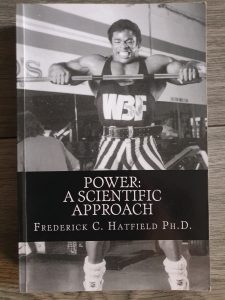
Although I felt some of the information in this book was a little outdated, it is packed with useful infomation.
The late Frederick Hatfield was a man to be admired and this book is well worth a read (another you can read cover to cover) – this book followed his bestselling book – Bodybuilding: A Scientific Approach.
Frederick Hatfield was nicknamed Dr. Squat. He was an American world champion Powerlifter and set a squat world record by lifting 460kg (1,014lbs) in the 100kg (220lbs) weight class. This at the time was the heaviest squat in history regardless of bodyweight.
STRENGTH AND CONDITIONING FOR YOUNG ATHLETES
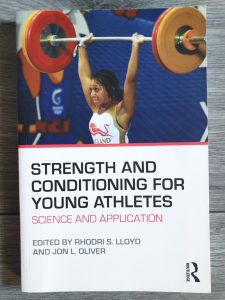
If asked to recommend a manual that covers youth strength and conditioning, this is the manual I usually recommend.
It covers areas such as:
- Talent Identification.
- Motor Skill Development.
- Strength, Power and Plyometrics.
- Speed and Agility.
- Metabolic Conditioning.
- Mobility and Flexibility.
- Periodization.
- Weightlifting Myths.
- Overtraining and Injury Prevention.
- Nutrition.
The book is jam-packed with references after each chapter as all the information is completely evidence-based. However, the manual is written in an easy-to-read style and therefore, I recommend it to anyone who is interested in the development of youth athletes.
DEVELOPING SPEED
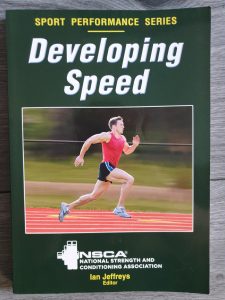
The final two books in the Top 10 list are both NSCA books from their Sport Performance Series.
Much of the content in these books is covered in the Essentials of Strength Training and Conditioning which also bears the tag of the National Strength and Conditioning Association. However, I think these smaller books are such an easy read and therefore, ideal for any coach or enthusiast.
They are packed with exercises and drills and therefore, act as great references.
Other titles include:
- Developing Power.
- Developing Agility and Quickness.
- Developing the Core.
DEVELOPING ENDURANCE
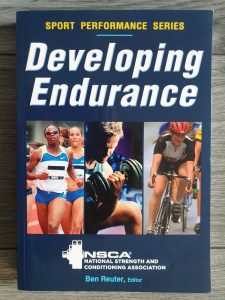
Developing Endurance is part of the Sport Performance Series. However, I believe it deserves it’s own mention on the list as it is a comprehensive 300 pages and covers a subject many coaches neglect i.e. Endurance – the metabolic conditioning side of things.
The development of the energy systems is something I feel a lot of strength and conditioning coaches put far too little thought into, hence why Metabolic Conditioning is considered one of the SCC BIG 8.
BONUS BOOK: THE STRENGTH & CONDITIONING COACH’S GUIDE TO MICROSOFT EXCEL
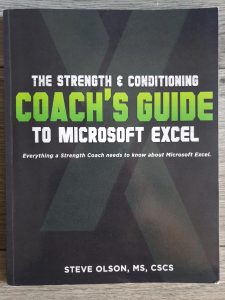
Although this is a top 10 list, I wanted to add this manual as a bonus book because it is so different from the rest.
Microsoft Excel is a tool that is used extensively by strength and conditioning coaches, and those that learn to use it effectively will literally save themselves hours and hours.
This manual is a step-by-step guide to Microsoft excel (specifically for coaches) with plenty of illustrations. It gives you the basics to create functional and stylish programming templates, and also progresses to more advanced functions using formulas etc.
If you are going to be programming on excel, grab yourself a copy of this book.
A WORD FROM THE AUTHOR
Hey, thanks for reading my article, I hope you found it useful.
If you are interested in our book club, join our newsletter on the homepage.
Coach Curtis
